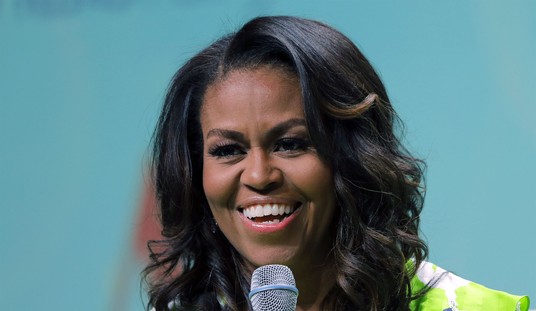At the American Interest Website, Walter Russell Mead writes, “Whether we are analyzing why blue liberalism doesn’t work anymore or trying to think about what kind of political synthesis could replace it, we should do something obvious and ask ourselves what it is that Americans want. “
Mead adds that, “In a big-picture, broad-brush way, the American people by and large have a Maslovian hierarchy of needs, and we want their political leaders to meet them all.” After running through them all (click over for his list), he concludes:
If you, Mr. or Ms. Aspiring Candidate, can deliver a policy package that most Americans think fulfills these five criteria, you will do more than win most of the elections most of the time. You will build the kind of loyalty and commitment that leads voters to forgive your occasional failures and faults and you will shift the whole political system in your direction, forcing even your opponents to work within your framework.
A generation ago, blue liberalism was pretty good at giving most of the people what they wanted, and between 1932 and 1968 blue liberals dominated American politics. From FDR to JFK (and LBJ until the Vietnam War went wrong and inflation got out of hand), liberal Democrats impressed most Americans with their ability to manage national security, build prosperity, honor the dignity of the common man and lead the world on the basis of a reasonably consistent and coherent world view. The one Republican who managed to get elected president during the only period of stable Democratic power since the Civil War was Dwight Eisenhower — a Republican who could have won the Democratic nomination in 1952 if he had wanted it, and who accepted the basic New Deal policies of the Roosevelt years and the national security policy of the Truman era.
Since that time, the terrain has shifted. From 1968 through 2010 we seem to have been in another era — one in which blue liberal candidates lost more elections than they won and the most successful Democratic president (President Clinton) was famous for embracing a key conservative talking point when he proclaimed that “The era of big government is over.” Many blue liberals hoped that President Obama’s election in 2008 meant that the tide had turned back; that hope looks less likely in late 2010.
I don’t think it’s a coincidence that in the wake of President Reagan’s two terms and near the end of GWB’s first, Ann Coulter wrote in 2004:
When they’re running for office, all Democrats claim to support tax cuts (for the middle class), to support gun rights (for hunters) and to “personally oppose” abortion. And then they get into office and vote to raise taxes, ban guns and allow abortions if a girl can’t fit into her prom dress.
The common wisdom holds that “both parties” have to appeal to the extremes during the primary and then move to the center for the general election. To the contrary, both parties run for office as conservatives. Once they have fooled the voters and are safely in office, Republicans sometimes double-cross the voters. Democrats always do.
And while Obama had the furthest distance to go in feinting a pivot from the hard left at the start of the primaries towards the center by the fall of 2008, he did a remarkable job of bringing in centrists from the Army of Davids (Frum, Brooks and Gergen, alas), Peggy Noonan, and in a classic case of “screw dad,” Christopher Buckley, along with Paul Volcker, a liberal economist appointed by Carter, but much beloved by conservatives for his role in helping to rebuild the economy when President Reagan held him over for his first term.
If only a plumber hadn’t gotten between the president-to-be and his teleprompter, Obama could have kept this charade going until January, heck, maybe even early February of 2009.
Flash-forward to the winter of the liberal shellacking. This week, James Pethokoukis of Reuters spots Obama trying to pivot as his liberal dream collapses. (Though the lame-duck Senate seems to be doing their damndest to go out flying the flag for the ruling class.) James writes:
The failure to pass a 2011 budget is also tremendously positive. It shows the impact of the Tea Party movement has not waned since the November midterms. This creates a situation next year where the flood of new Tea Party Republicans can combine a threat of government shutdown with a refusal to raise the national debt ceiling so as to squeeze spending cuts out of Obama and congressional Democrats.
Indeed, some GOP insiders believe the president — with a bit of nudging — may be ready to strike a deal to reform the tax system and cut future Social Security benefits along lines suggested by his own debt commission earlier this month. And as the tax compromise shows, Obama now seems willing to anger some within his own party in order to get legislation passed and win the reelection.
But if Obama does manage to somehow eke out a second term, it will be as president of a country that he may understand a bit better than he did two years ago. His true value and concerns in 2008, it turns out, were not those of most of his countrymen. Most Americans were not itching for government-run healthcare, a vast energy bureaucracy, an expansion of union power or new penalties on success and wealth creation. To a great extent, the term Tea Party America is redundant. The U.S. remains a center-right nation, and prosperity usually ensues when its leaders understand this.
How does Obama position himself for 2012? And how should the GOP candidate, whoever he or she is, best prepare for this?









Join the conversation as a VIP Member